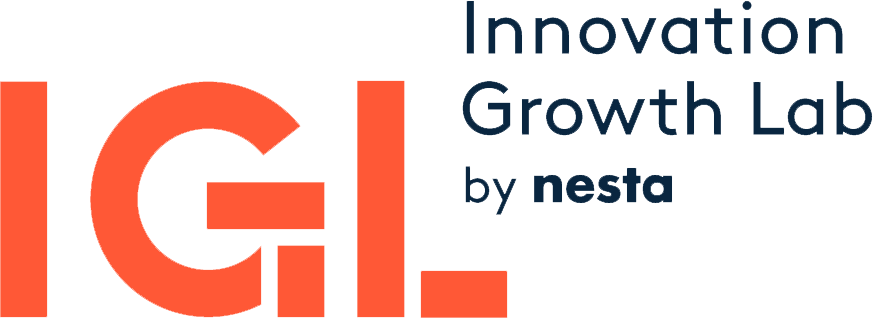
Innovation agencies deal with the ‘here and now’ of supporting innovation and entrepreneurship. But they must also be prepared to respond to the challenges and opportunities of tomorrow. How might they be able to learn from a future that is not yet written, and use this to inform their strategic planning?
At the Innovation Growth Lab, we support innovation agencies, government ministries and other partners around the world to run structured experiments to learn what works when it comes to the design and implementation of policies and programmes. We have observed that the constantly shifting landscape is making it more difficult for agencies to act with the long-term directionality required to effectively design and deliver innovation policies. As a result, we are increasingly looking to help them think about current and future trajectories and the roles they may have to play.
The changing roles of innovation agencies
Over the last year, IGL has been working with the TAFTIE network of European innovation agencies on a major project mapping their distinctive characteristics. TAFTIE comprises 34 agencies in 28 countries. They are united by a similar guiding purpose: to support the effective implementation of research, technology and innovation policies in their respective national ecosystems. However, the form that this support takes varies considerably, as do the roles that these agencies take on.
We were asked to capture insights from member agencies that could help them to identify common challenges and opportunities. Knowing that there is a huge amount that agencies can learn from one another, we wanted to enable the TAFTIE network to collectively consider shifts they might have to take in the near future, and how their existing network could be maximised to support future transitions. In order to do this, we explored the current and emerging practices of innovation agencies across TAFTIE - identifying ways in which they are navigating the challenges and opportunities within their systems today.
We found that some agencies are deeply involved in the design or coordination of national innovation strategies, while others are primarily focused on delivery. Some are fully funded by government, while others act as entrepreneurs, seeking additional funding from other sources. Some aim to foster the international competitiveness of national companies, while others look more at developing innovative ecosystems within their borders. They draw on a mix of funding and other support instruments to achieve a wide range of goals, such as stimulating the development of new products, ideas and services, building competitiveness in particular sectors, and/or driving innovation that responds to societal challenges. However, all in some capacity are having to confront the fact they may need to shift existing roles to respond to more transformational agendas.
Scenarios as windows to different possible futures
IGL and TAFTIE recently convened a workshop in partnership with the Horizon-funded IMAJINE project, a cross-European initiative looking at the future of territorial inequality and spatial justice. IMAJINE has developed four scenarios for the future of Europe in 2048, posing contrasting visions for how the policy ecosystem might evolve (you can read IGL’s response to these scenarios in the IMAJINE report).
They were built using the Oxford Scenario Planning Approach, which develops plausible visions in order to challenge assumptions about the future we may come to inhabit. Rather than predictions or preferred options, scenarios are assessments of the future context, developed for a specific purpose, that contrast with the way the future context is currently being framed. Each of the IMAJINE scenarios reveals different values, priorities, and dynamics in Europe a generation from now, which TAFTIE agencies used to prompt thinking about the range of different roles and relationships they might hold in the future:
Silver Citadel paints a picture of a deeply centralised European power bloc, which uses machine intelligence to manage economic prosperity and equity across its members. Agencies questioned whether there would still be a place for open competition in a system designed to achieve equitable outcomes, and if experimentation would still be possible in a much more automated environment. They considered whether public servants might need to serve as the ‘conscience of the algorithm’, and suggested that the focus of innovation agencies might shift away from supporting more traditional science and technology sectors, and towards becoming ‘sensors’ for the system as a whole.
Silicon Scaffold imagines a world where prosperity is the overriding goal, but social and economic life has migrated almost entirely to virtual spaces, and corporate city-states have increased autonomy and power. In response to this scenario, innovation agencies commented that in some places this has already become a reality, with e-residents disrupting traditional entry borders to business, commerce and citizenship. In such a world, innovation agencies questioned the role of state support. What kind of services cannot be digitalised? What challenges can corporations not tackle? The grand challenges driving mission-oriented innovation felt like the gap that innovation agencies could fill in this future, where global cooperation to address messy and inextricable problems is required.
In Green Guardian, a postcapitalist order rises in response to the ravages of climate change, creating a society whose overriding priorities are sustainability, survival, and wellbeing. In this world, innovation agencies act as important role models for a new economy. There would be substantial changes to funding instruments, monitoring and evaluation practices to avoid enabling projects that have a negative impact on the environment. Innovation itself may be deemed a capitalist concept and therefore innovation agencies might exist under a new name. In such a future, agencies questioned which actors from the current innovation system would still exist, and in which domains innovation would still flourish given that existing dominant sectors such as ICT and industry could be considered highly polluting.
Finally, Patchwork Rainbow envisages a context where divergent and hard-to-reconcile cultural and social norms cause Europe to form a mosaic of regions which are increasingly dependent on new relationships and alliances elsewhere in the world. Key questions for agencies here related to the role that different kinds of evidence might play in policymaking, and how to build partnerships with actors that might hold very different values. In this world, innovation agencies might take on responsibility for brokering trust and collaboration within or between regions, or they could seek to influence others by exporting their own model of innovation support.
Using the future to gain new perspective on the present
Exploring different potential futures offers more than just an interesting thought experiment. By stretching assumptions about what might await, new insights can be surfaced about the strategic choices that innovation agencies need to make now, or the skills and capabilities they should consider developing. It can help them look for signals that might be emerging in the present, so that they can be better equipped to navigate their shifting operational landscape.
Opening up the conceptual space of the future enables us to identify better questions, as well as better answers, when we look ahead. We may not be able to gather rigorous evidence about things that haven’t happened yet, but we can exercise our curiosity in disciplined ways which allow us to frame smarter and shrewder versions of two key questions: what’s next? And what should we do about it?


